With the NFL scouting combine set to begin Tuesday, NFL Nation reporters pick combine stars from every team, from the unknowns who boosted their stocks to the stars who put on a show and solidified their draft positions.
AFC EAST
 Buffalo Bills: Most considered cornerback Ronald Darby a second- or third-round pick when he declared for the 2015 NFL draft, but his combine performance solidified his status as the Bills' eventual second-round selection at No. 50 overall. Darby ran the 40-yard dash in 4.38 seconds, third best among cornerbacks at the combine, and posted the third-best vertical jump at his position. He finished second in the Associated Press' NFL defensive rookie of the year voting the past season. -- Mike Rodak
Buffalo Bills: Most considered cornerback Ronald Darby a second- or third-round pick when he declared for the 2015 NFL draft, but his combine performance solidified his status as the Bills' eventual second-round selection at No. 50 overall. Darby ran the 40-yard dash in 4.38 seconds, third best among cornerbacks at the combine, and posted the third-best vertical jump at his position. He finished second in the Associated Press' NFL defensive rookie of the year voting the past season. -- Mike Rodak
 Miami Dolphins: Defensive tackle Ndamukong Suh was considered a sure thing before he attended the 2010 NFL combine. Even so, Suh solidified his status as one of the draft's best prospects and went No. 2 overall that year after showing rare athleticism for a player his size. Suh benched-pressed 225 pounds 32 times, showed off a 35.5 inch vertical and ran the 40-yard dash in 5.03 seconds. Those attributes have since helped the Dolphins defender reach four Pro Bowls. -- James Walker
Miami Dolphins: Defensive tackle Ndamukong Suh was considered a sure thing before he attended the 2010 NFL combine. Even so, Suh solidified his status as one of the draft's best prospects and went No. 2 overall that year after showing rare athleticism for a player his size. Suh benched-pressed 225 pounds 32 times, showed off a 35.5 inch vertical and ran the 40-yard dash in 5.03 seconds. Those attributes have since helped the Dolphins defender reach four Pro Bowls. -- James Walker
 New England Patriots: Linebacker Jamie Collins wasn't viewed by many draft analysts as more than a mid-round consideration, but his athleticism, especially his record broad jump of 139 inches, wowed many at the combine. When the Patriots selected Collins, the thinking was that athletes such as him don't come around often, and they could groom him into a football player. That is the way it has unfolded. -- Mike Reiss
New England Patriots: Linebacker Jamie Collins wasn't viewed by many draft analysts as more than a mid-round consideration, but his athleticism, especially his record broad jump of 139 inches, wowed many at the combine. When the Patriots selected Collins, the thinking was that athletes such as him don't come around often, and they could groom him into a football player. That is the way it has unfolded. -- Mike Reiss
 New York Jets: In 2006, center Nick Mangold showed his athleticism, running the 40-yard dash in 5.05 seconds and clocking a shuttle time of 4.40 seconds -- not bad for a 300-pound man. That separated the former Ohio State standout from the other centers, convincing the Jets he was worthy of a late first-round pick. Mangold's mobility was one of his best traits early in his career, allowing him to be an effective blocker at the second level. -- Rich Cimini
New York Jets: In 2006, center Nick Mangold showed his athleticism, running the 40-yard dash in 5.05 seconds and clocking a shuttle time of 4.40 seconds -- not bad for a 300-pound man. That separated the former Ohio State standout from the other centers, convincing the Jets he was worthy of a late first-round pick. Mangold's mobility was one of his best traits early in his career, allowing him to be an effective blocker at the second level. -- Rich Cimini
AFC NORTH
 Baltimore Ravens: Lardarius Webb significantly improved his draft stock when he tied for the fastest 40-yard dash time among cornerbacks (4.46 seconds) at the 2009 combine. It was an important showing for Webb, who needed to turn heads as a small school defensive back from Nicholls State. The Ravens drafted him in the third round, and Webb became a five-year starter. Webb is expected to make the shift to safety in 2016. -- Jamison Hensley
Baltimore Ravens: Lardarius Webb significantly improved his draft stock when he tied for the fastest 40-yard dash time among cornerbacks (4.46 seconds) at the 2009 combine. It was an important showing for Webb, who needed to turn heads as a small school defensive back from Nicholls State. The Ravens drafted him in the third round, and Webb became a five-year starter. Webb is expected to make the shift to safety in 2016. -- Jamison Hensley
 Cincinnati Bengals: One of the stars of the 2014 combine was a previously little-known center named Russell Bodine. Before the North Carolina product arrived in Indianapolis, he was touted for his strength. But it wasn't until after he left that most gained an appreciation for just how strong he was. Bodine put up an impressive 42 reps in the 225-pound bench press. That's something only a handful of combine prospects have ever done. The quantitative evidence of Bodine's strength led the Bengals to draft him in the fourth round, and he has been their starting center ever since. -- Coley Harvey
Cincinnati Bengals: One of the stars of the 2014 combine was a previously little-known center named Russell Bodine. Before the North Carolina product arrived in Indianapolis, he was touted for his strength. But it wasn't until after he left that most gained an appreciation for just how strong he was. Bodine put up an impressive 42 reps in the 225-pound bench press. That's something only a handful of combine prospects have ever done. The quantitative evidence of Bodine's strength led the Bengals to draft him in the fourth round, and he has been their starting center ever since. -- Coley Harvey
 Cleveland Browns: Barkevious Mingo solidified his top-10 status by running the second-fastest 40-yard dash among defensive linemen. He also had the second-best vertical jump and tied for the longest broad jump. That athletic ability led the Browns to take him sixth, but they discounted his lean frame, which has not translated well to the NFL. Mingo is still looking to find his place in Cleveland. -- Pat McManamon
Cleveland Browns: Barkevious Mingo solidified his top-10 status by running the second-fastest 40-yard dash among defensive linemen. He also had the second-best vertical jump and tied for the longest broad jump. That athletic ability led the Browns to take him sixth, but they discounted his lean frame, which has not translated well to the NFL. Mingo is still looking to find his place in Cleveland. -- Pat McManamon
 Pittsburgh Steelers: With spotty production and character concerns coming out of Clemson, wide receiver Martavis Bryant needed a big combine performance. He certainly did his part, as he broke off a 4.42-second 40-yard dash, 39-inch vertical and 124-inch broad jump -- at 6-foot-4. Bryant still went in the fourth round, despite athleticism that warranted better. Without that combine performance, Bryant could have fallen even further. Although he served a four-game suspension for failed drug tests, on the field he has rewarded the Steelers for their faith. In his first 24 NFL games, he has 17 total touchdowns. -- Jeremy Fowler
Pittsburgh Steelers: With spotty production and character concerns coming out of Clemson, wide receiver Martavis Bryant needed a big combine performance. He certainly did his part, as he broke off a 4.42-second 40-yard dash, 39-inch vertical and 124-inch broad jump -- at 6-foot-4. Bryant still went in the fourth round, despite athleticism that warranted better. Without that combine performance, Bryant could have fallen even further. Although he served a four-game suspension for failed drug tests, on the field he has rewarded the Steelers for their faith. In his first 24 NFL games, he has 17 total touchdowns. -- Jeremy Fowler
AFC SOUTH
 Houston Texans: I'm going with J.J. Watt. He has made himself into an even better athlete than he was back then, but Watt ranked second among defensive linemen in the vertical jump (37 inches) and the three-cone drill and was fourth in bench-press reps. The Texans took him 11th, one spot after the Jaguars took quarterback Blaine Gabbert, in the 2011 draft. -- Tania Ganguli
Houston Texans: I'm going with J.J. Watt. He has made himself into an even better athlete than he was back then, but Watt ranked second among defensive linemen in the vertical jump (37 inches) and the three-cone drill and was fourth in bench-press reps. The Texans took him 11th, one spot after the Jaguars took quarterback Blaine Gabbert, in the 2011 draft. -- Tania Ganguli
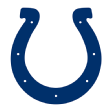 Indianapolis Colts: The 2009 draft featured two cornerbacks taken in the first round: Vontae Davis and Malcolm Jenkins. But it was Davis' future teammate, Darius Butler, who turned heads during the combine. Butler ran the fastest 40-yard dash (4.46 seconds) among cornerbacks while having the second-best vertical jump (43 inches) and broad jump (134 inches). Butler turned that success into being drafted by New England in the second round. -- Mike Wells
Indianapolis Colts: The 2009 draft featured two cornerbacks taken in the first round: Vontae Davis and Malcolm Jenkins. But it was Davis' future teammate, Darius Butler, who turned heads during the combine. Butler ran the fastest 40-yard dash (4.46 seconds) among cornerbacks while having the second-best vertical jump (43 inches) and broad jump (134 inches). Butler turned that success into being drafted by New England in the second round. -- Mike Wells
 Jacksonville Jaguars: Quarterback Blake Bortles did something elite quarterbacks rarely do at the combine: He participated in every drill. He said he wanted to show teams how competitive he is and that just telling teams that he is a competitor wasn't enough. The Jaguars were zeroing in on Bortles before the combine, but hearing the reason for his decision to throw impressed them even more. -- Mike DiRocco
Jacksonville Jaguars: Quarterback Blake Bortles did something elite quarterbacks rarely do at the combine: He participated in every drill. He said he wanted to show teams how competitive he is and that just telling teams that he is a competitor wasn't enough. The Jaguars were zeroing in on Bortles before the combine, but hearing the reason for his decision to throw impressed them even more. -- Mike DiRocco
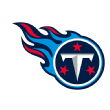 Tennessee Titans: Quarterback Marcus Mariota's measurables at the combine were excellent. He ran a 4.52 40-yard dash, including covering the first 10 yards in 1.57 seconds. He also showed off a vertical jump of 36 inches. While his interviews and board work certainly finalized the Titans' decision, there were no doubts about his athletic attributes after he ran the gauntlet in Indianapolis. -- Paul Kuharsky
Tennessee Titans: Quarterback Marcus Mariota's measurables at the combine were excellent. He ran a 4.52 40-yard dash, including covering the first 10 yards in 1.57 seconds. He also showed off a vertical jump of 36 inches. While his interviews and board work certainly finalized the Titans' decision, there were no doubts about his athletic attributes after he ran the gauntlet in Indianapolis. -- Paul Kuharsky
AFC WEST
 Denver Broncos: When the team arrived at the 2011 combine, the Broncos already liked Von Miller and had already put him in a group of players they would consider with the draft's No. 2 pick. They had seen the pass-rush work, uncommon flexibility and leverage he used to either overpower or run around opposing blockers. But when the 246-pound pass-rusher uncorked a 4.53 40-yard dash, 37-inch vertical leap and 126-inch standing broad jump, it was the last sliver of confirmation Denver needed to make him the pick. That he elected to work out, the Broncos felt, also showed his competitiveness. -- Jeff Legwold
Denver Broncos: When the team arrived at the 2011 combine, the Broncos already liked Von Miller and had already put him in a group of players they would consider with the draft's No. 2 pick. They had seen the pass-rush work, uncommon flexibility and leverage he used to either overpower or run around opposing blockers. But when the 246-pound pass-rusher uncorked a 4.53 40-yard dash, 37-inch vertical leap and 126-inch standing broad jump, it was the last sliver of confirmation Denver needed to make him the pick. That he elected to work out, the Broncos felt, also showed his competitiveness. -- Jeff Legwold
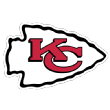 Kansas City Chiefs: Nose tackle Dontari Poe not only moved himself into the first round with a strong combine performance in 2012 but also went all the way to No. 11, with which he was picked by the Chiefs. Poe ran a 4.98 40-yard dash, which is a remarkable time for a 346-pound player. He also did a combine-best 44 reps on the bench press. -- Adam Teicher
Kansas City Chiefs: Nose tackle Dontari Poe not only moved himself into the first round with a strong combine performance in 2012 but also went all the way to No. 11, with which he was picked by the Chiefs. Poe ran a 4.98 40-yard dash, which is a remarkable time for a 346-pound player. He also did a combine-best 44 reps on the bench press. -- Adam Teicher
 Oakland Raiders: A small school stud from Buffalo entering the 2014 combine, Khalil Mack had many eyes on him to see how he stacked up against the big-school talent. Mack did not disappoint: He ran a 4.65-second 40-yard dash, benched 225 pounds 23 times and broad jumped 127 inches to go with a 40-inch vertical. The Raiders made him the No. 5 overall pick, and last year, he made history by being named All-Pro at linebacker and defensive end. -- Paul Gutierrez
Oakland Raiders: A small school stud from Buffalo entering the 2014 combine, Khalil Mack had many eyes on him to see how he stacked up against the big-school talent. Mack did not disappoint: He ran a 4.65-second 40-yard dash, benched 225 pounds 23 times and broad jumped 127 inches to go with a 40-inch vertical. The Raiders made him the No. 5 overall pick, and last year, he made history by being named All-Pro at linebacker and defensive end. -- Paul Gutierrez
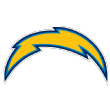 San Diego Chargers: The scouting community already knew about cornerback Jason Verrett's athleticism, but NFL observers became more aware of the TCU product's explosiveness with an eye-popping performance at the combine. Verrett finished in the top five among cornerbacks in the 40-yard dash (4.38 seconds), vertical jump (39 inches) and broad jump (128 inches). He also looked smooth in drills, which cemented his status as one of the top defensive backs in the 2014 draft. -- Eric D. Williams
San Diego Chargers: The scouting community already knew about cornerback Jason Verrett's athleticism, but NFL observers became more aware of the TCU product's explosiveness with an eye-popping performance at the combine. Verrett finished in the top five among cornerbacks in the 40-yard dash (4.38 seconds), vertical jump (39 inches) and broad jump (128 inches). He also looked smooth in drills, which cemented his status as one of the top defensive backs in the 2014 draft. -- Eric D. Williams
NFC EAST
 Dallas Cowboys: Google Byron Jones and broad jump, and more than 56,000 sources are cited. Jones' combine workout last year paved his way to a first-round selection. Jones' broad jump of 12-feet, 3-inches was not only a combine record but also a world record. His vertical jump of 44½ inches was a half-inch short of the best leap at the 2014 combine. What Jones was able to do at the combine brought teams back to his tape on the field, and he was able to make himself a lot of money. The Cowboys picked Jones with the 27th overall pick in the first round, and he started 11 games as a rookie at cornerback and safety. For 2016, the Cowboys view Jones as a starting free safety. -- Todd Archer
Dallas Cowboys: Google Byron Jones and broad jump, and more than 56,000 sources are cited. Jones' combine workout last year paved his way to a first-round selection. Jones' broad jump of 12-feet, 3-inches was not only a combine record but also a world record. His vertical jump of 44½ inches was a half-inch short of the best leap at the 2014 combine. What Jones was able to do at the combine brought teams back to his tape on the field, and he was able to make himself a lot of money. The Cowboys picked Jones with the 27th overall pick in the first round, and he started 11 games as a rookie at cornerback and safety. For 2016, the Cowboys view Jones as a starting free safety. -- Todd Archer
 New York Giants: The Giants liked Odell Beckham Jr. before the 2014 combine but weren't 100 percent sold on him as the No. 12 overall pick. His 4.43 40-yard dash time and his dazzling performance in the receiver agility drills helped convince the team that he was an elite talent who was somewhat overlooked amid the hype about Sammy Watkins and Mike Evans. The Giants already believed Beckham's game film showed him playing bigger than his 6-foot height, but they came away from Indy convinced about his speed, and that helped push Beckham above offensive lineman Zack Martin on the team's first-round draft board. -- Dan Graziano
New York Giants: The Giants liked Odell Beckham Jr. before the 2014 combine but weren't 100 percent sold on him as the No. 12 overall pick. His 4.43 40-yard dash time and his dazzling performance in the receiver agility drills helped convince the team that he was an elite talent who was somewhat overlooked amid the hype about Sammy Watkins and Mike Evans. The Giants already believed Beckham's game film showed him playing bigger than his 6-foot height, but they came away from Indy convinced about his speed, and that helped push Beckham above offensive lineman Zack Martin on the team's first-round draft board. -- Dan Graziano
 Philadelphia Eagles: Offensive tackle Lane Johnson started his college career as a quarterback at a junior college before he moved to tight end and then defensive end after transferring to Oklahoma. When he got to the combine in 2013, he had been playing offensive tackle for two years. Teams needed to be sold on Johnson's athleticism. He ran the 40-yard dash in 4.72 seconds and was a top performer in the vertical jump, broad jump, cone drill and 20-yard shuttle. The Eagles took Johnson fourth overall, and he has become a fixture at right tackle. -- Phil Sheridan
Philadelphia Eagles: Offensive tackle Lane Johnson started his college career as a quarterback at a junior college before he moved to tight end and then defensive end after transferring to Oklahoma. When he got to the combine in 2013, he had been playing offensive tackle for two years. Teams needed to be sold on Johnson's athleticism. He ran the 40-yard dash in 4.72 seconds and was a top performer in the vertical jump, broad jump, cone drill and 20-yard shuttle. The Eagles took Johnson fourth overall, and he has become a fixture at right tackle. -- Phil Sheridan
 Washington Redskins: Offensive tackle Trent Williams was going to be a high pick, but his showing at the combine in 2010 only solidified his standing. He ran the 40-yard dash in 4.88 seconds, had a 10-yard split of 1.70 seconds -- hovering around the territory of top pass-rushers -- bench-pressed 225 pounds 23 times and had a vertical leap of 34.5 inches. He has made the past four Pro Bowls, so he has sort of worked out for Washington. -- John Keim
Washington Redskins: Offensive tackle Trent Williams was going to be a high pick, but his showing at the combine in 2010 only solidified his standing. He ran the 40-yard dash in 4.88 seconds, had a 10-yard split of 1.70 seconds -- hovering around the territory of top pass-rushers -- bench-pressed 225 pounds 23 times and had a vertical leap of 34.5 inches. He has made the past four Pro Bowls, so he has sort of worked out for Washington. -- John Keim
NFC NORTH
 Chicago Bears: Offensive lineman Kyle Long's stock skyrocketed after the Senior Bowl and combine in 2013. Keep in mind, Long started only five games for Oregon in 2012, before the NCAA ruled he had used up all his eligibility. Despite such a limited body of work, Long wowed scouts with his size, speed, athleticism and intelligence. Long also answered all the character concerns that stemmed from an arrest early in college, while he was a baseball player at Florida State. Without the combine and Senior Bowl, the Bears probably would not have selected Long with the 20th overall pick. -- Jeff Dickerson
Chicago Bears: Offensive lineman Kyle Long's stock skyrocketed after the Senior Bowl and combine in 2013. Keep in mind, Long started only five games for Oregon in 2012, before the NCAA ruled he had used up all his eligibility. Despite such a limited body of work, Long wowed scouts with his size, speed, athleticism and intelligence. Long also answered all the character concerns that stemmed from an arrest early in college, while he was a baseball player at Florida State. Without the combine and Senior Bowl, the Bears probably would not have selected Long with the 20th overall pick. -- Jeff Dickerson
 Detroit Lions: Darius Slay went into the 2013 combine as a mid-round player who needed to prove his speed. Slay ran the fastest 40-yard dash time among cornerbacks in his draft class (4.36 seconds), and that solidified one of his physical strengths. After an inconsistent rookie season, Slay has become one of the top young cornerbacks in the league and could be in line for a lucrative contract extension this offseason. He was, by far, the best of former general manager Martin Mayhew's second-round picks. -- Michael Rothstein
Detroit Lions: Darius Slay went into the 2013 combine as a mid-round player who needed to prove his speed. Slay ran the fastest 40-yard dash time among cornerbacks in his draft class (4.36 seconds), and that solidified one of his physical strengths. After an inconsistent rookie season, Slay has become one of the top young cornerbacks in the league and could be in line for a lucrative contract extension this offseason. He was, by far, the best of former general manager Martin Mayhew's second-round picks. -- Michael Rothstein
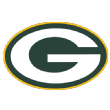 Green Bay Packers: The combine doesn't just help prospects jump into the first round; it also helps guys get drafted at all. Such was the case with Jeff Janis, the relatively unknown receiver who nearly lifted the Packers over the Cardinals in the NFC divisional playoff game this past season. Janis might not have been drafted, if not for a standout performance at the 2014 combine. The small-college standout from Saginaw Valley State jumped onto the Packers' board after he ran a 4.42 40-yard dash and had a 37.5-inch vertical. Only two receivers ran a faster 40 than Janis'. -- Rob Demovsky
Green Bay Packers: The combine doesn't just help prospects jump into the first round; it also helps guys get drafted at all. Such was the case with Jeff Janis, the relatively unknown receiver who nearly lifted the Packers over the Cardinals in the NFC divisional playoff game this past season. Janis might not have been drafted, if not for a standout performance at the 2014 combine. The small-college standout from Saginaw Valley State jumped onto the Packers' board after he ran a 4.42 40-yard dash and had a 37.5-inch vertical. Only two receivers ran a faster 40 than Janis'. -- Rob Demovsky
 Minnesota Vikings: Jerick McKinnon was an unknown commodity as a triple-option quarterback out of Georgia Southern -- until he went to the combine. McKinnon put up 32 reps on the bench press and ran a 4.41-second 40-yard dash, which vaulted him into the third round of the draft as a running back. He had a solid rookie season with Adrian Peterson suspended and became a versatile weapon in the Vikings' offense at the end of 2015. -- Ben Goessling
Minnesota Vikings: Jerick McKinnon was an unknown commodity as a triple-option quarterback out of Georgia Southern -- until he went to the combine. McKinnon put up 32 reps on the bench press and ran a 4.41-second 40-yard dash, which vaulted him into the third round of the draft as a running back. He had a solid rookie season with Adrian Peterson suspended and became a versatile weapon in the Vikings' offense at the end of 2015. -- Ben Goessling
NFC SOUTH
 Atlanta Falcons: Wide receiver Julio Jones exploded at the combine in 2011, despite a fracture in his foot. The former Alabama star ran the 40-yard dash in 4.39 seconds, the third-best time among receivers. The Falcons traded five picks to move up to select Jones sixth overall, and Jones has been one of the league's best wideouts ever since. -- Vaughn McClure
Atlanta Falcons: Wide receiver Julio Jones exploded at the combine in 2011, despite a fracture in his foot. The former Alabama star ran the 40-yard dash in 4.39 seconds, the third-best time among receivers. The Falcons traded five picks to move up to select Jones sixth overall, and Jones has been one of the league's best wideouts ever since. -- Vaughn McClure
 Carolina Panthers: Before the combine, one of the knocks on middle linebacker Luke Kuechly was his athleticism. He showed up five pounds heavier, at 242 pounds, than his playing weight that season at Boston College, and he finished sixth among linebackers in strength, as he bench-pressed 225 pounds 27 times. He then finished third among linebackers in the 40-yard dash, with a time of 4.58 seconds. That the Panthers got him with the ninth pick of the 2012 draft now seems like a steal. He was the NFC Defensive Player of the Year in 2013, and he's a three-time Pro Bowl selection who has more tackles (591) than any player in the league the past four seasons. -- David Newton
Carolina Panthers: Before the combine, one of the knocks on middle linebacker Luke Kuechly was his athleticism. He showed up five pounds heavier, at 242 pounds, than his playing weight that season at Boston College, and he finished sixth among linebackers in strength, as he bench-pressed 225 pounds 27 times. He then finished third among linebackers in the 40-yard dash, with a time of 4.58 seconds. That the Panthers got him with the ninth pick of the 2012 draft now seems like a steal. He was the NFC Defensive Player of the Year in 2013, and he's a three-time Pro Bowl selection who has more tackles (591) than any player in the league the past four seasons. -- David Newton
 New Orleans Saints: Saints offensive tackle Terron Armstead gives a good name to "workout warriors." The Saints drafted him in the third round out of Arkansas-Pine Bluff in 2013, after he set the record for fastest 40-yard dash by an offensive lineman in the history of the combine (4.71 seconds). The 6-foot-5, 304-pounder also registered a vertical leap of 34.5 inches. Armstead didn't start until the final month of his rookie season, but he has emerged as one of the best young left tackles in the NFL. Coach Sean Payton said the past season that he wouldn't trade Armstead for any other left tackle in the league. -- Mike Triplett
New Orleans Saints: Saints offensive tackle Terron Armstead gives a good name to "workout warriors." The Saints drafted him in the third round out of Arkansas-Pine Bluff in 2013, after he set the record for fastest 40-yard dash by an offensive lineman in the history of the combine (4.71 seconds). The 6-foot-5, 304-pounder also registered a vertical leap of 34.5 inches. Armstead didn't start until the final month of his rookie season, but he has emerged as one of the best young left tackles in the NFL. Coach Sean Payton said the past season that he wouldn't trade Armstead for any other left tackle in the league. -- Mike Triplett
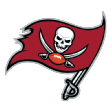 Tampa Bay Buccaneers: There were questions about linebacker Kwon Alexander's size (6-foot-1, 227 pounds) being a problem in the NFL, so he needed to showcase his athleticism and speed at the combine. He did, with the second-fastest 40-yard dash by a linebacker (4.55), a broad jump of more than 10 feet and a vertical jump of 36 inches. The Bucs took him in the fourth round, and he had 3.0 sacks, nine PBUs, two forced fumbles and two interceptions as a rookie. -- Mike DiRocco
Tampa Bay Buccaneers: There were questions about linebacker Kwon Alexander's size (6-foot-1, 227 pounds) being a problem in the NFL, so he needed to showcase his athleticism and speed at the combine. He did, with the second-fastest 40-yard dash by a linebacker (4.55), a broad jump of more than 10 feet and a vertical jump of 36 inches. The Bucs took him in the fourth round, and he had 3.0 sacks, nine PBUs, two forced fumbles and two interceptions as a rookie. -- Mike DiRocco
NFC WEST
 Arizona Cardinals: There were questions surrounding safety Tyrann Mathieu before the 2013 combine, but he showed that even after a year off, he still had the physical attributes to be an impact player -- which he was when the Cardinals took a risk on him in the third round. Aside from the off-the-field issues that led to Mathieu's being kicked off the LSU team before the 2012 season and arrested that October, Mathieu's size was a concern. He's 5-foot-9 in a league that values height and bulk. He was able to add the muscle needed to play safety at the NFL level, but he proved he didn't need the height by continuing his ball-hawking ways with the Cardinals. -- Josh Weinfuss
Arizona Cardinals: There were questions surrounding safety Tyrann Mathieu before the 2013 combine, but he showed that even after a year off, he still had the physical attributes to be an impact player -- which he was when the Cardinals took a risk on him in the third round. Aside from the off-the-field issues that led to Mathieu's being kicked off the LSU team before the 2012 season and arrested that October, Mathieu's size was a concern. He's 5-foot-9 in a league that values height and bulk. He was able to add the muscle needed to play safety at the NFL level, but he proved he didn't need the height by continuing his ball-hawking ways with the Cardinals. -- Josh Weinfuss
 Los Angeles Rams: Rams defensive tackle Aaron Donald arrived in Indianapolis known for his college production but with questions about his physical attributes. He answered all of them during his workout. He finished fifth among all defensive linemen in the 40-yard dash (4.68 seconds) and was the only defensive tackle to finish in the top 15. He also finished second among defensive linemen in the 225-pound bench press (35 reps), fourth in the three-cone drill (7.11 seconds) and ninth in the 20-yard shuttle (4.39 seconds). Combine those attributes with his nonstop motor, and it should be no surprise that he has already developed into one of the league's best defenders. -- Nick Wagoner
Los Angeles Rams: Rams defensive tackle Aaron Donald arrived in Indianapolis known for his college production but with questions about his physical attributes. He answered all of them during his workout. He finished fifth among all defensive linemen in the 40-yard dash (4.68 seconds) and was the only defensive tackle to finish in the top 15. He also finished second among defensive linemen in the 225-pound bench press (35 reps), fourth in the three-cone drill (7.11 seconds) and ninth in the 20-yard shuttle (4.39 seconds). Combine those attributes with his nonstop motor, and it should be no surprise that he has already developed into one of the league's best defenders. -- Nick Wagoner
 San Francisco 49ers: Jaquiski Tartt was somewhat of a wild card in Indianapolis last year, coming from a small school in Samford and participating in only two workouts (broad jump and 40-yard dash). But after ranking fifth (124.0 inches) and fourth (4.53 seconds) among safeties, respectively, he impressed the Niners enough for them to make him their second-round draft pick. After veteran Antoine Bethea was lost for the season in Week 7, Tartt became the starter at strong safety and impressed with 65 tackles, which tied for fourth most on the team. He also had two sacks, an athletic interception of Johnny Manziel and a forced fumble. -- Paul Gutierrez
San Francisco 49ers: Jaquiski Tartt was somewhat of a wild card in Indianapolis last year, coming from a small school in Samford and participating in only two workouts (broad jump and 40-yard dash). But after ranking fifth (124.0 inches) and fourth (4.53 seconds) among safeties, respectively, he impressed the Niners enough for them to make him their second-round draft pick. After veteran Antoine Bethea was lost for the season in Week 7, Tartt became the starter at strong safety and impressed with 65 tackles, which tied for fourth most on the team. He also had two sacks, an athletic interception of Johnny Manziel and a forced fumble. -- Paul Gutierrez
 Seattle Seahawks: Bruce Irvin tested off the charts in 2012. At 6-foot-3, 245 pounds, he ran a 4.50 40-yard dash. Irvin's time of 6.70 seconds in the three-cone drill was the fastest of any linebacker or defensive lineman that year, as was his 20-yard shuttle time of 4.03 seconds. Irvin, who was taken 15th overall, showed the Seahawks that he had the ability to play a versatile role in their defense as more than just a pass-rusher. He is scheduled to become an unrestricted free agent this offseason. -- Sheil Kapadia
Seattle Seahawks: Bruce Irvin tested off the charts in 2012. At 6-foot-3, 245 pounds, he ran a 4.50 40-yard dash. Irvin's time of 6.70 seconds in the three-cone drill was the fastest of any linebacker or defensive lineman that year, as was his 20-yard shuttle time of 4.03 seconds. Irvin, who was taken 15th overall, showed the Seahawks that he had the ability to play a versatile role in their defense as more than just a pass-rusher. He is scheduled to become an unrestricted free agent this offseason. -- Sheil Kapadia
